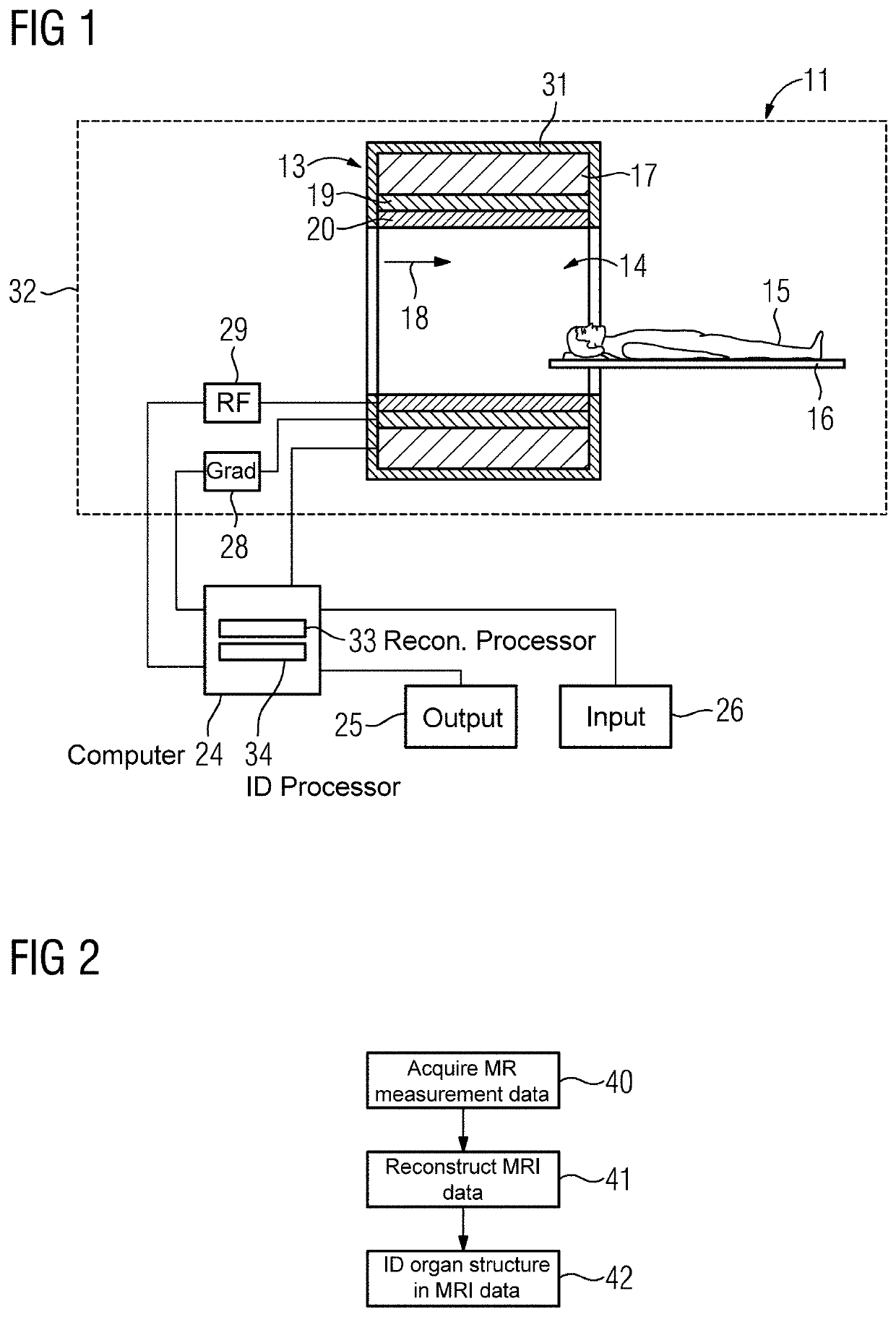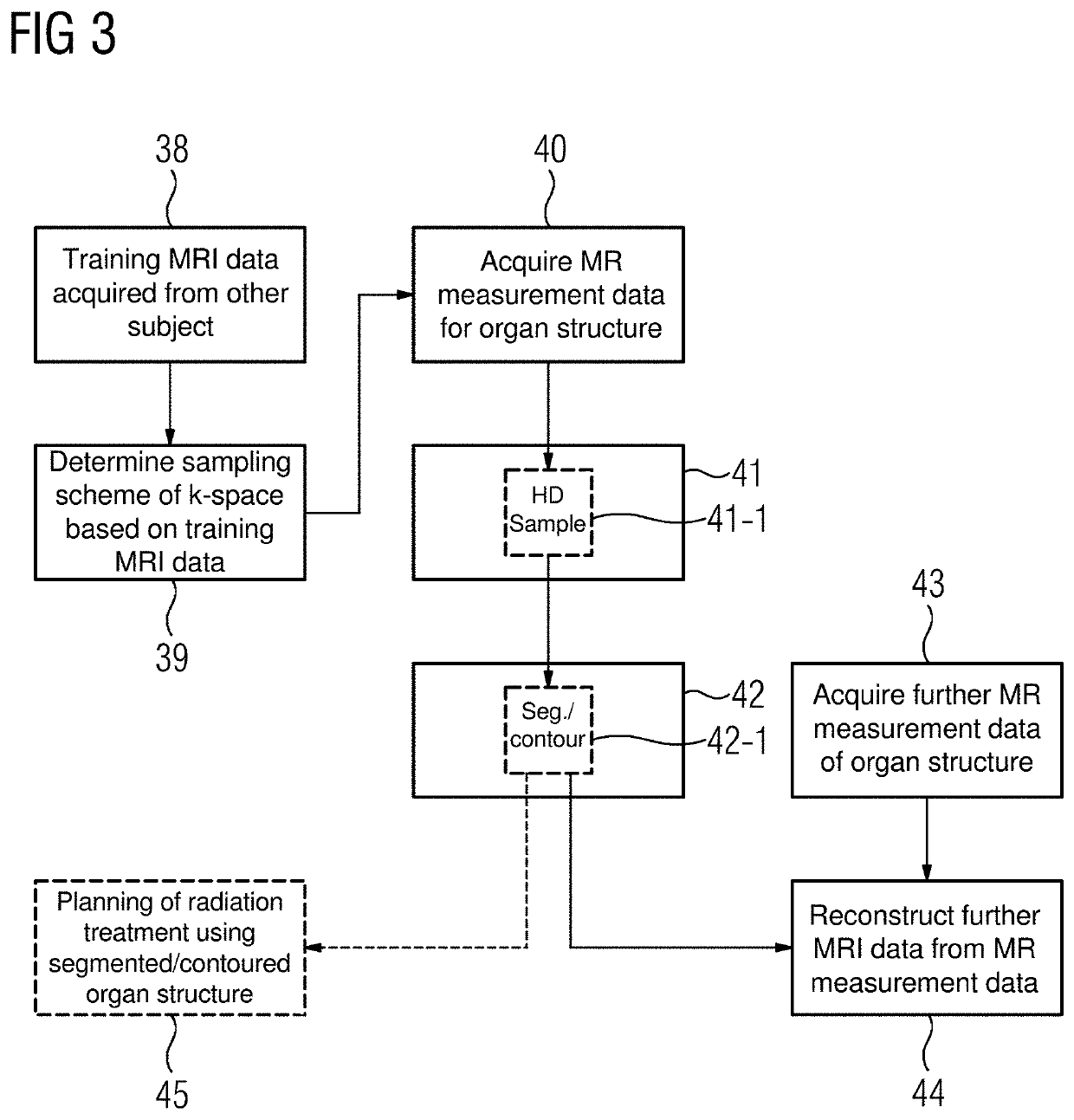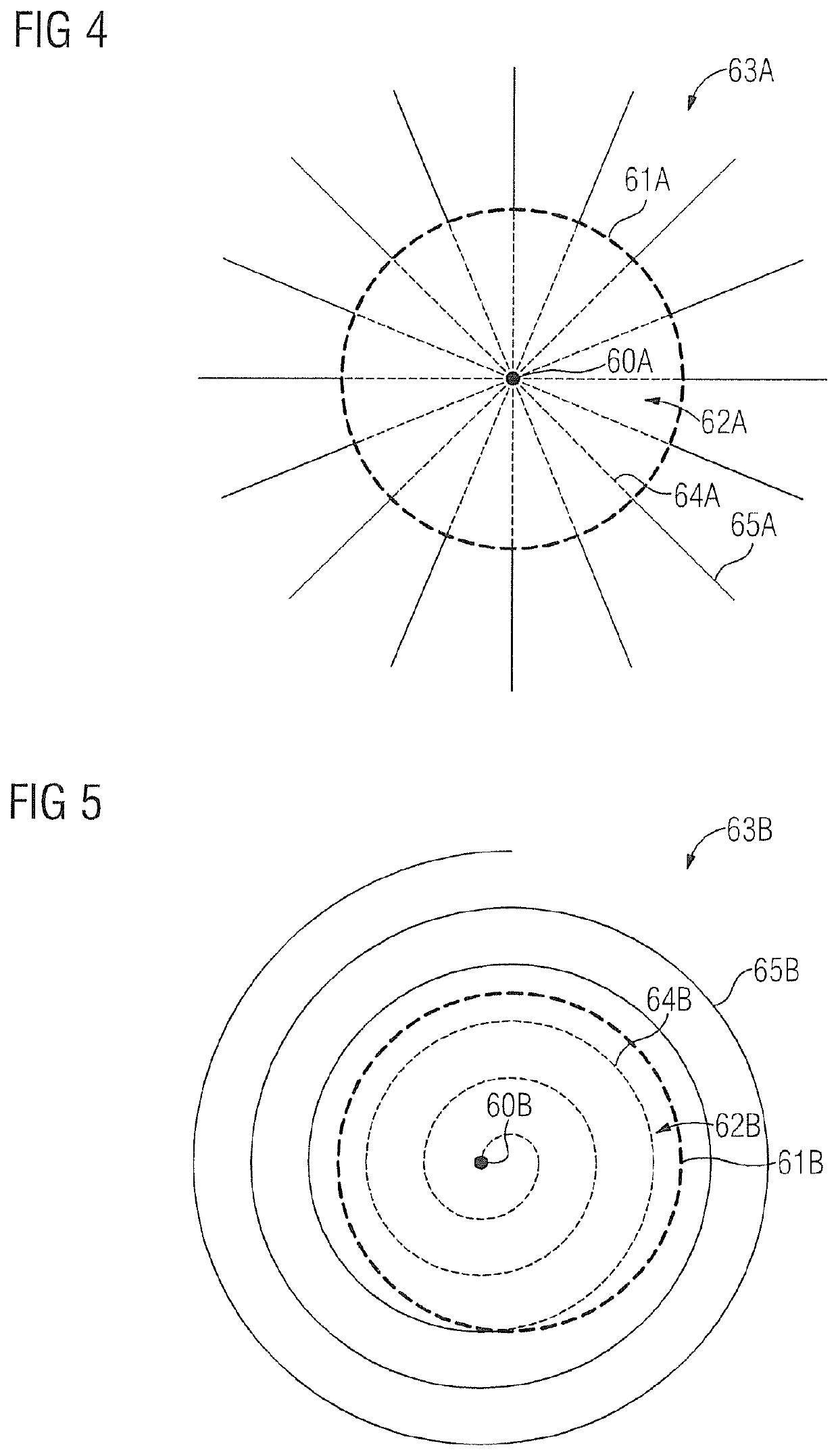Method and apparatus for identifying an organ structure of an examined object in magnetic resonance image data
a technology of magnetic resonance image data and organ structure, which is applied in the field of method for identifying the organ structure of an examined object in magnetic resonance image data, can solve the problem that the magnetic resonance measurement data are not typically directly available to a diagnostician, and achieve the goal of improving facilitating the contouring of the organ structure, and facilitating the contouring
- Summary
- Abstract
- Description
- Claims
- Application Information
AI Technical Summary
Benefits of technology
Problems solved by technology
Method used
Image
Examples
first embodiment
[0067]FIG. 2 shows a flowchart of the inventive method.
[0068]In a first method step 40 the scanner 13 of the magnetic resonance apparatus 11 is operated to, acquire magnetic resonance measurement data for an organ structure of the examined object using a magnetic resonance sequence that specifies a sampling scheme of k-space.
[0069]In a further method step 41 the reconstruction processor 33 of the computer 24 reconstructs the magnetic resonance image data from the magnetic resonance measurement data.
[0070]In a further method step 42 the identification processor 34 of the computer 24 identifies of the organ structure in the magnetic resonance image data.
[0071]The sampling scheme of k-space supports the subsequent identification of the organ structure in the magnetic resonance image data reconstructed from the magnetic resonance measurement data.
second embodiment
[0072]FIG. 3 shows a flowchart of an inventive method.
[0073]The following description is substantially limited to the differences from the exemplary embodiment in FIG. 2, with reference being made to the description of the exemplary embodiment in FIG. 2 in relation to identical method steps. Method steps that are substantially the same are basically numbered with the same reference numerals.
[0074]The embodiment of the inventive method shown in FIG. 3 substantially comprises the method steps 40, 41, 42 of the first embodiment of the inventive method according to FIG. 2. In addition, the embodiment of the inventive method shown in FIG. 3 comprises additional method steps and / or substeps. An alternative procedure to that in FIG. 3, which has only some of the additional method steps and / or substeps shown in FIG. 3, is also conceivable. Of course an alternative procedure to that in FIG. 3 can also have additional method steps and / or substeps.
[0075]There are different possibilities how th...
PUM
 Login to View More
Login to View More Abstract
Description
Claims
Application Information
 Login to View More
Login to View More - R&D
- Intellectual Property
- Life Sciences
- Materials
- Tech Scout
- Unparalleled Data Quality
- Higher Quality Content
- 60% Fewer Hallucinations
Browse by: Latest US Patents, China's latest patents, Technical Efficacy Thesaurus, Application Domain, Technology Topic, Popular Technical Reports.
© 2025 PatSnap. All rights reserved.Legal|Privacy policy|Modern Slavery Act Transparency Statement|Sitemap|About US| Contact US: help@patsnap.com



